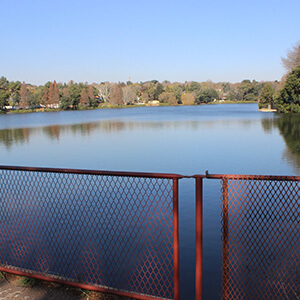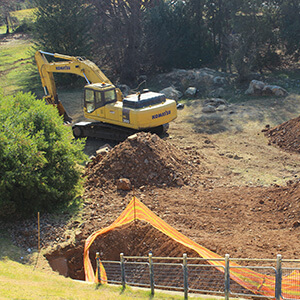At 103 years, the dam’s ageing infrastructure, erosion, corrosion and several significant floods have necessitated the City’s investment in proactive maintenance of this landmark. “While Emmarentia dam had significant improvements undertaken in 1988, a comprehensive investigation recently undertaken by the JRA confirmed that preventative maintenance and flood retention protection is required to safeguard the dam’s integrity and ensure the safety of residential properties downstream”, confirmed JRA Acting Managing Director Mpho Kau.
“The investigation revealed some subsiding with the dam wall slope stability to be potentially at risk, and that urgent repairs are required to the return channel as a major flood could undermine the existing gabion and concrete walls causing significant structural damage, while continued erosion could expose the banks and possibly undermine existing municipal roads located in close proximity to the right hand side of the return channel”, explained Kau, “ In addition, the Olifants road located along the crest of the dam’s embankment has also been affected by possible leakages within storm water inlet structures requiring repairs and road reconstruction.”
The rehabilitation project, which started in April 2015, is being undertaken in accordance with the City of Johannesburg Stormwater By-Laws and Dam Safety Regulations considering the dam is classified as medium sized with a category III High Hazard Potential Rating.
The project scope includes:
• Improving the flood prevention facility system to protect properties located downstream of the dam from flooding. This includes excavating and repairing the pipework and surrounding soil at the stormwater structures located along the dam, altering outlet structures; repairing the box culvert outlet, widening the control section and constructing a gabion wall on the eastern side of the outlet;
• Repairing the dam wall by strengthening the stone protection layer;
• Addressing the obstructions currently located in the upstream of the culvert spillway which decrease the capacity, including the removal of the canoe storage shed located in the immediate vicinity of the spillway inlet as this poses a serious risk in terms of public safety;
• Removal of trees located on the side of the left bank, as well as a large Plane tree on the upstream embankment, which, following consultation with academics will grow significantly in size potentially becoming detrimental to the embankment integrity;
• Implementing protection measures to prevent future erosion caused by the high volumes of flooding water which includes gabion wall reconstruction and repairs as well as reconstructing the bottom of the channel;
• Construction of a concrete wall in the area where the channel comes in close proximity to the roadway to prevent damage to the roadway, as well as reconstruction of the Olifants road;
• Repairs to a portion of the wall which is subsiding next to the bridge support; and
• Negotiations with the Canoe and Sailing clubs and investigations of alterations to the Club’s configurations.
“We look forward to the completion of these preventative measures which will ensure the dam has the capacity to convey a flooding event of the 25 year recurrence flood peak value, and we request the community’s cooperation whilst work is underway as all rehabilitation will be undertaken without draining the dam” said JRA Acting Managing Director Mpho Kau.
The project which commenced in April 2015 is envisaged to be completed in January 2016.





